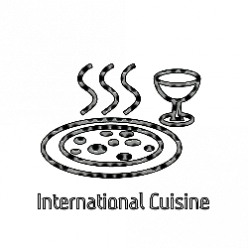To make sure we’re all to be on the same page begin with an explanation. Coffee is a beverage that’s made by using very heated or boiling water with coffee beans that have been roasted and ground.
The beans for coffee are extracted from coffee plants. They are members of the botanical genus Coffea. The beans are located inside the plant’s fruit, which is known as cherries; it takes approximately a year for a cherry to mature and become ripe so that the bean is able to be picked.
These plants (which are in reality coffee trees, trimmed to a smaller size) require mild temperatures, enough shade, and plenty of rainfall. They can only be grown in temperate regions all over the world, between the Tropic of Cancer and the Tropic of Capricorn. They are located in the Western Hemisphere, that’s between Central Mexico in the north and the Amazon rain forest in the South. That area is known as “the belt of beans” or the coffee region.
The coffee is slightly acidic as well as somewhat bitter. It’s thought to be a health-enhancing drink, it acts as mild stimulant thanks to its caffeine content, and is the second most consumed beverage throughout the world (right next to tea, but without water).
We’ll look at these aspects in greater detail after we’ve looked at the history of coffee.
These are the two most commonly-told stories about the discovery of coffee.

Ethiopia
The most interesting story is about goat herders from the Ethiopian region known as Kaffa. (Hmm…Kaffa? Coffee? That’s already cool.) The story goes that the goat stumbled upon the plant that produces coffee, and he tried chewing the beans and was amazed at their stimulating effects, so the beans were taken to a nearby monastery.
The monks, who were awed by the experience, threw the beans into the fire to eliminate them but were struck by the scent of the coffee beans, and came to their rescue, throwing them into boiling water to keep the beans. Eureka! Coffee!
It’s true that Ethiopians used to chew coffee beans for many centuries prior to that. They would grind the beans, mix the coffee with animal fat or ghee and take the mix with them during long journeys to be used for energy and stimulation.
In the 1100s in the 1100s, some Ethiopian tribes mixed coffee with porridge, and then they began making wine with beans or boiling the beans to make coffee. This story isn’t as exciting as the goat-herder tale but it’s more credible.
Yemen
The origin tale from Yemen is also fascinating. The priest (who was also a doctor) was banished to a Yemeni desert cave, where he was on the brink of dying from starvation. It was possible that he came across an undiscovered coffee plant or, in a more mellow version of the story, birds brought him a branch from a coffee tree.
In the end, he found the cherries too bitter to take raw, he set the fruit on a burning fire to cook them, but it made them difficult to chew. Then he boiled them and you’ll understand the remainder of the story. his exile was lifted and he was able to bring coffee beans home with him and everyone was happy for the rest of their lives. In fact, the pastor was declared to be a saint and the monastery was established in his honor.
Very nice article. Let’s see what we know for certain, though. Coffee beans were shipped by Ethiopia to Yemen at the end of the 15th century, where Sufi monks used them to stay awake during their long prayer sessions. They also had the Yemeni City of Mocha (hmmm…mocha! Interesting!) also became a central distribution hub for the sought-after Mocha beans that grow in the mountains of that region, which were shipped to Europe and other ports starting in the 17th century. This means that if you decided to subscribe to getting coffee online, it will most likely come from this city.
Therefore, we can confirm for a fact that many hundreds of years ago, the people of coffee drinking were in the Arabian Peninsula and in the Middle East.
